Understanding Retina Image Tests in Ophthalmology

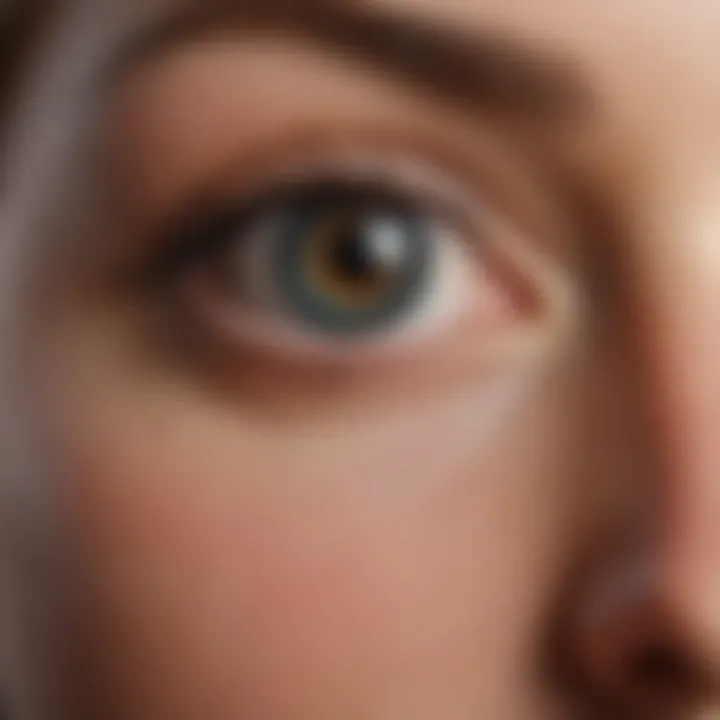
Article Overview
There is growing recognition of the importance of retina image tests in the healthcare sector. These tests serve as invaluable tools in diagnosing and monitoring various ocular conditions. This section outlines the purpose of this article and highlights its relevance across multiple disciplines.
Purpose of the Article
The primary aim of this article is to elucidate the principles, techniques, and applications of retina imaging. By diving into the advancements in optical coherence tomography and fundus photography, it provides an extensive analysis of the role that these technologies play in identifying diseases such as diabetic retinopathy and macular degeneration. It will explore current methodologies and their implications for patient care and clinical practices.
Relevance to Multiple Disciplines
Retina image tests are not confined to ophthalmology alone. They are pertinent to a variety of fields:
- Healthcare Providers: Understanding these tests can enhance physicians’ abilities to diagnose.
- Researchers: Those investigating ocular diseases can benefit from advanced imaging techniques.
- Educators: Instruction about these techniques allows for a more informed future generation in health sciences.
- Healthcare Administrators: Insights into retina imaging can inform resource allocation.
Research Background
A thorough comprehension of retina imaging necessitates an appreciation of its historical context and the key concepts that underpin its application.
Historical Context
The evolution of retina imaging has transformed the landscape of ocular diagnostics. In the earlier days of ophthalmology, diagnosis depended heavily on subjective assessments. The advent of imaging technology has shifted this paradigm. With the introduction of tools like fundus photography in the mid-20th century, healthcare professionals gained the ability to objectively assess retinal health with greater accuracy.
Key Concepts and Definitions
It is essential to grasp several key terms in the context of retina imaging. Understanding the following concepts lays the groundwork for a comprehensive analysis:
- Optical Coherence Tomography (OCT): A non-invasive imaging test that uses light waves to take cross-section pictures of the retina.
- Fundus Photography: A technique that captures images of the interior surface of the eye, highlighting structures such as the retina, optic disc, and macula.
- Diabetic Retinopathy: A diabetes complication that affects the eyes and is a leading cause of blindness in adults.
- Macular Degeneration: A medical condition which may result in blurred or no vision in the center of the visual field.
"Retina imaging techniques not only enhance diagnostic capabilities but also inform treatment decisions, emphasizing the role of technology in modern medicine."
"Retina imaging techniques not only enhance diagnostic capabilities but also inform treatment decisions, emphasizing the role of technology in modern medicine."
By exploring these topics, the article offers a nuanced understanding of retina image tests, engaging students, researchers, educators, and professionals in an in-depth dialogue.
Preface to Retina Image Testing
Retina image testing is a fundamental aspect of modern ophthalmology. It unveils insights into various ocular diseases, thereby offering critical information for diagnosis and treatment. For health professionals, understanding these tests provides a basis for improving patient care and enhancing treatment outcomes. Since the retina is sensitive and vital for vision, employing advanced imaging techniques can be pivotal for timely interventions.
Definition of Retina Image Tests
Retina image tests are diagnostic procedures used to capture images of the retina. They help visualize and analyze the structure and function of the retina. These tests can detect abnormalities like diabetic retinopathy, macular degeneration, and other retinal diseases. Techniques such as fundus photography and optical coherence tomography represent significant advancements in this field. They provide detailed images that are crucial for accurate diagnosis and monitoring.
History and Development
The history of retina imaging is filled with technological advancements that have transformed the landscape of eye care. Early methods involved simple camera techniques, which were limited in detail and required skilled interpretation. As technology progressed, the introduction of digital imaging allowed for greater precision.
In the 1980s and 1990s, optical coherence tomography emerged, enabling cross-sectional imaging of the retina. This technology showed how layers of the retina interact, leading to improved understanding and treatment of eye diseases. Over the years, imaging techniques have continued to evolve, integrating digital enhancements and artificial intelligence, which have made analysis more efficient and accurate.
Types of Retina Image Tests
The field of ophthalmology has significantly benefited from various types of retina image tests. Each test brings unique advantages and limitations, catering to different diagnostic requirements. Understanding these tests allows healthcare professionals to choose appropriate methods for specific conditions, enhancing patient care.
Fundus Photography
Fundus photography captures detailed images of the interior surface of the eye. This method provides a clear representation of the retina, optic disc, and macula. It is crucial for documenting changes over time, enabling practitioners to monitor diseases like diabetic retinopathy.
The process involves using a specialized camera known as a fundus camera. Strong light is directed into the eye, which helps to illuminate the retina for capture. The image produced offers sufficient resolution to identify abnormalities.
One significant benefit is its non-invasiveness. Patients can undergo the procedure comfortably, making it suitable for routine screenings. Fundus photographs can also aid in educating patients about their eye health. However, it does not provide depth perception or cross-sectional views, which can limit its diagnostic capabilities.
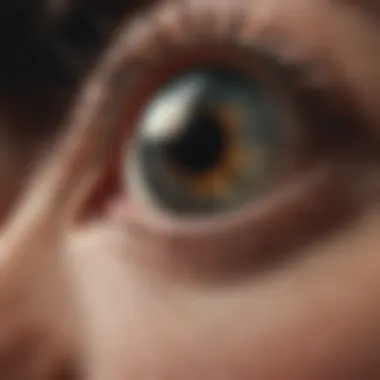
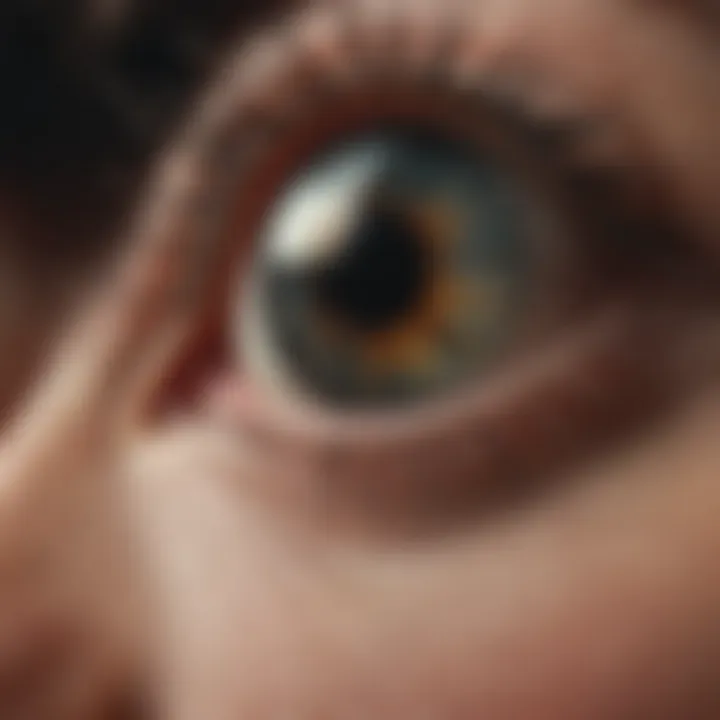
Optical Coherence Tomography
Optical coherence tomography (OCT) has emerged as a transformative technology in retinal imaging. It utilizes light waves to create cross-sectional images of the retina. This technique has proven invaluable for revealing detailed information about retinal layers and structures.
THe OCT allows for high-resolution imaging and can detect subtle changes that other methods may miss. This detail aids in early diagnosis and monitoring of conditions like macular degeneration, glaucoma, and retinal detachment. The speed and accuracy of OCT make it a preferred choice for specialists.
However, one consideration is the cost associated with this technology, as it may not be widely available in all clinical settings. Despite that, its diagnostic value continues to make it a critical tool in modern ophthalmology.
Fluorescein Angiography
Fluorescein angiography is another pivotal technique in retina imaging. This method involves injecting a fluorescent dye into the bloodstream and capturing images of the retina as the dye travels through blood vessels. This visualizes blood flow and helps identify any blockages or leaks.
The powerful imaging capabilities of fluorescein angiography make it essential in diagnosing conditions like diabetic retinopathy and age-related macular degeneration. By identifying retinal vascular changes, clinicians can make informed decisions about treatment and management plans.
Nevertheless, some patients may experience allergic reactions to the dye, which raises concerns about its safety. Moreover, the process requires careful technique to ensure high-quality images are obtained.
Indocyanine Green Angiography
Indocyanine green angiography, similar to fluorescein angiography, provides insights into retinal blood flow. However, it uses a different dye that binds specifically to plasma proteins, allowing for greater visualization of choroidal vessels. This feature is particularly advantageous in diagnosing disorders in the choroidal layer of the retina.
This imaging technique offers greater detail regarding conditions like choroidal neovascularization, which is often difficult to assess through other imaging methods. While it is less commonly used than fluorescein angiography, it can be crucial in specific scenarios, especially where traditional methods fall short.
There are some drawbacks, such as potential allergic reactions and the need for more sophisticated equipment. However, the clarity it brings to choroidal imaging is significant for comprehensive diagnostic assessments.
Principles of Retina Imaging Technologies
The principles of retina imaging technologies form the foundation for understanding how various imaging techniques work. These principles are essential for both clinicians and researchers to grasp when they interpret the results from these tests. The importance lies in accurately diagnosing conditions affecting the retina, which directly impacts patient outcomes. Good knowledge of how these technologies function also leads to better innovation in the field, as professionals look for areas to improve.
Light Reflection and Transmission
Light reflection and transmission are crucial phenomena in retina imaging. These concepts dictate how light interacts with the retina and how images are subsequently captured. When light passes through the eye, it reflects off the retina and is transmitted back through the optical system used in imaging techniques. Each imaging method utilizes these properties differently, providing various insights into retinal health.
For instance, in fundus photography, the light is directed at the retina, capturing reflected images that reveal the blood vessels and the optic disc. In optical coherence tomography, low-coherence light interferometry is employed to create cross-sectional images. This method details the layers of the retina, allowing for assessment of conditions like diabetic retinopathy and macular degeneration. Understanding these principles ensures that clinicians can properly evaluate the images generated and make informed decisions.
Image Capture Methods
Image capture methods are another vital aspect of retina imaging technologies. Different techniques adopt varying approaches to capture images of the retina, each with its own advantages.
- Fundus Photography: Utilizes specialized cameras to obtain two-dimensional images of the retina. This method is relatively straightforward and widely available.
- Optical Coherence Tomography (OCT): Provides high-resolution, three-dimensional images using light waves. OCT can detect changes in retinal layers that are not visible through regular photography.
- Fluorescein Angiography: Involves injecting a fluorescent dye and capturing images as it travels through the blood vessels in the retina. This technique is particularly useful in identifying leaking blood vessels and diagnosing conditions affecting circulation.
- Indocyanine Green Angiography: Similar to fluorescein angiography but utilizes indocyanine green dye for better visualization of choroidal circulation.
By employing these diverse image capture methods, healthcare professionals can obtain comprehensive views of the retina, leading to more accurate diagnoses and better management of ocular diseases.
"The ability to visualize the retinal structures using different imaging modalities enhances our understanding and treatment of retinal diseases."
"The ability to visualize the retinal structures using different imaging modalities enhances our understanding and treatment of retinal diseases."
Through effective use of light reflection, transmission, and various image capture methodologies, retina imaging technologies continue to evolve, improving patient care and research capabilities.
Clinical Applications
The clinical applications of retina image tests are paramount in today's ophthalmology practice. These tests play a crucial role in diagnosing various ocular conditions, assessing disease progression, and aiding in treatment planning. They provide insights that are often not visible through traditional examination methods. As we delve into specific applications, we highlight the impact these imaging techniques have on patient outcomes and the overall management of eye health.
Diagnosis of Diabetic Retinopathy
Diabetic retinopathy is a leading cause of vision loss among adults. Early detection is key to preventing severe complications. Retina image tests such as Optical Coherence Tomography (OCT) and fluorescein angiography are widely used in diagnosing this condition. These techniques offer high-resolution images of the retina, allowing ophthalmologists to identify microvascular changes associated with diabetes. They can visualize retinal hemorrhages, exudates, and alterations in the retinal and choroidal structures.
Effective diagnosis relies on interpreting these visual cues, which can guide the clinical decision-making process.
"Using advanced imaging techniques, clinicians can detect subtle changes in retinal structure that might indicate early diabetic retinopathy, significantly improving patient outcomes."
"Using advanced imaging techniques, clinicians can detect subtle changes in retinal structure that might indicate early diabetic retinopathy, significantly improving patient outcomes."
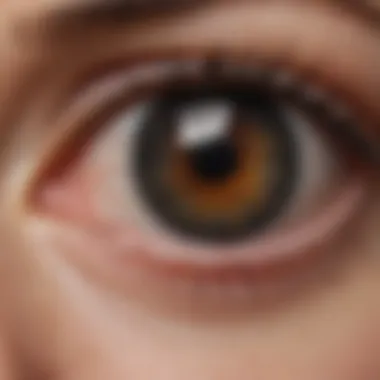
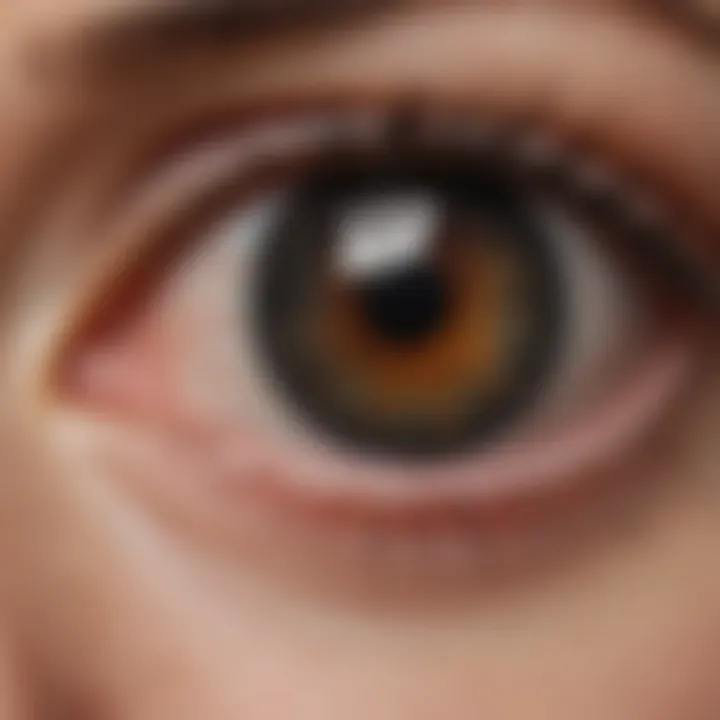
Regular screenings are vital for patients with diabetes. They help in tailoring treatment plans, which may include laser therapy or intravitreal injections. The integration of retina imaging in patient care allows for proactive management, minimizing the risk of irreversible vision loss.
Detection of Macular Degeneration
Age-related macular degeneration (AMD) is another common condition that benefits from retina imaging. This disease affects the central part of the retina, leading to vision impairment. Fundus photography and OCT are instrumental in observing the characteristics of AMD, such as drusen formation and retinal pigment epithelium deterioration.
Diagnosing AMD at an early stage enables timely intervention, such as lifestyle changes or pharmacological treatments. Moreover, retina imaging can help monitor the efficacy of these interventions over time. Early identification of wet AMD can lead to swift treatment that prevents significant sight loss, showcasing the importance of these imaging techniques in clinical practice.
Monitoring Ocular Hypertension and Glaucoma
Ocular hypertension and glaucoma represent a significant challenge in ophthalmology, often called the silent thief of sight. Regular monitoring is needed for at-risk patients. Retina imaging provides a non-invasive way to assess the optic nerve head for damage, which is pivotal in glaucoma management. Techniques like OCT can measure the thickness of the retinal nerve fiber layer, offering critical information about optic nerve health.
Through consistent monitoring, healthcare providers can customize treatment strategies for their patients. The use of imaging technologies can help ascertain whether the disease is progressing and if adjustments in therapy are needed. This proactive approach in monitoring ocular conditions supports better long-term vision outcomes for patients, emphasizing the integral role of imaging technologies in ocular health management.
Technical Advancements in Retina Imaging
The field of retina imaging is rapidly evolving. Technical advancements play a crucial role in enhancing the quality and effectiveness of retina image tests. These innovations have transformed how clinicians diagnose, monitor, and manage ocular conditions. Understanding these advancements is critical for both practitioners and researchers. They offer new tools for accurate assessment and early detection of diseases, leading to better patient outcomes.
Emerging Imaging Modalities
New imaging modalities are expanding the capabilities of retina diagnostics. Notably, technologies such as multi-spectral imaging and adaptive optics are at the forefront.
- Multi-spectral Imaging: This technique captures images in multiple wavelengths of light. It allows for better visualization of retinal structures and can identify subtle changes often missed by traditional methods.
- Adaptive Optics: This modality enhances image quality by correcting distortions in the light path. It provides a detailed view of retinal cells, enabling more precise monitoring of diseases.
These approaches represent significant improvements in image resolution and diagnostic accuracy.
Artificial Intelligence in Image Analysis
Artificial Intelligence (AI) is reshaping the landscape of retina imaging. AI algorithms are now being integrated into image analysis processes.
- Automated Detection: AI can analyze thousands of images quickly, identifying anomalies like diabetic retinopathy or age-related macular degeneration. This speeds up the diagnostic process and reduces the workload on healthcare professionals.
- Predictive Models: Machine learning models can predict disease progression. By analyzing patient histories and imaging data, AI tools assist clinicians in formulating treatment plans tailored to individual needs.
Incorporating AI into retina imaging not only improves efficiency but also enhances diagnostic confidence.
"The integration of artificial intelligence in retina imaging signifies a leap towards more proactive healthcare delivery."
"The integration of artificial intelligence in retina imaging signifies a leap towards more proactive healthcare delivery."
These advancements in retina imaging demonstrate the potential to revolutionize patient care. As technology progresses, it brings new opportunities for improving clinical practices while ensuring patients receive timely and effective treatments.
Challenges in Retina Imaging
The field of retina imaging faces multiple challenges that impact its efficacy and reach. Despite the advancements that have been made in imaging technologies, some issues continue to limit their utility. Understanding these challenges is crucial for enhancing patient outcomes and refining clinical practices.
Limitations of Current Technologies
Current technologies in retina imaging, such as optical coherence tomography and fundus photography, have limitations affecting their scope and effectiveness. One of the major limitations is the resolution of the images. While modern imaging techniques produce high-quality images, they may not always be sufficient to identify subtle changes in the retina that could indicate early disease.
Another challenge is the time required for image acquisition and analysis. Some modalities necessitate lengthy processes that can lead to patient discomfort and reduced throughput in clinical settings. Additionally, these imaging systems often require skilled operators, thereby introducing variability in the quality of results, which may hinder diagnoses.
Moreover, accessibility to advanced imaging technologies can be a barrier. Some healthcare facilities, especially in rural or under-resourced areas, may lack the financial means or technical expertise to incorporate new technologies. This creates disparity in retinal healthcare, where some patients receive optimal care while others do not.
Patient Compliance and Accessibility Issues
Patient compliance represents a significant challenge in retina imaging. Regular screenings are essential for the early detection of diseases like diabetic retinopathy, yet many patients do not adhere to recommended follow-up appointments. Reasons for this non-compliance vary. Factors such as lack of awareness about the importance of routine eye exams, transportation difficulties, or financial constraints can deter patients from seeking necessary imaging.
Accessibility issues also intersect with patient compliance. Not all regions have access to comprehensive eye care facilities. The high cost of certain imaging tests can further limit patient access. When eye care practitioners are not available, patients may forgo the imaging tests altogether.
"Improving both patient compliance and accessibility is vital for maximizing the benefits of retina imaging technologies."
"Improving both patient compliance and accessibility is vital for maximizing the benefits of retina imaging technologies."
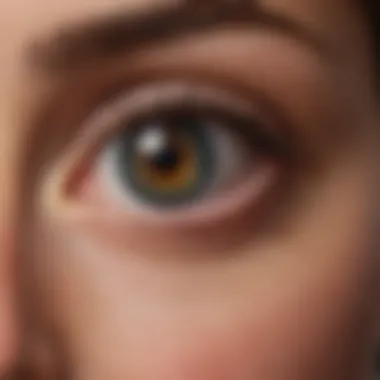
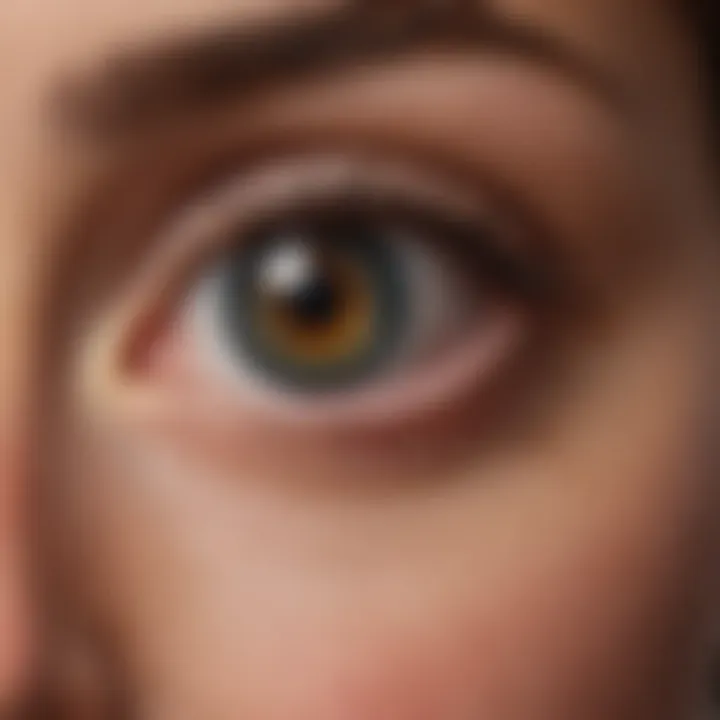
Addressing these challenges is essential for the continuous improvement in retina imaging. Solutions may include patient education initiatives, investment in telemedicine, and seeking community partnerships to enhance access and compliance. Understanding the limitations and challenges allows for the identification of potential pathways for resolution.
Future Directions in Retina Imaging Research
The evolution of retina imaging research is crucial in improving ocular health outcomes. The future holds promising innovations that can redefine how clinicians diagnose and manage eye conditions. This section focuses on two integral aspects: the potential innovations in imaging techniques and the integration of imaging with therapeutic interventions.
Potential Innovations in Imaging Techniques
Emerging technologies aim to enhance the resolution and accessibility of retina imaging. Several developments stand out in this context:
- Wide-field Imaging: Currently, imaging often captures limited retinal areas. Wide-field imaging enables a broader view, facilitating earlier detection of peripheral pathologies that may affect vision.
- Multimodal Imaging: Combining various imaging modalities, such as optical coherence tomography and fluorescein angiography, offers comprehensive data about retinal conditions. This approach enhances diagnostic accuracy by providing complementary information about retinal structure and vasculature.
- Portable Devices: The development of portable imaging devices could transform community healthcare. These tools can deliver quality images at the point of care, reducing barriers for patients in remote or underserved areas.
- Real-time Imaging: Future innovations may focus on real-time imaging. This could lead to immediate analysis during consultations, improving decision-making processes for clinicians.
Innovative imaging techniques can potentially lead to better monitoring of disease progression and treatment efficacy, ultimately benefitting patients.
Integrating Imaging with Therapeutic Interventions
The synergy between imaging technologies and therapeutic interventions is another critical area of focus. Effective integration can lead to improved patient outcomes. Consider the following aspects:
- Guided Therapies: Advanced imaging can help in precisely targeting therapies by providing detailed anatomical information. For instance, in the case of laser treatments, precise imaging allows for targeted application, minimizing damage to surrounding tissues.
- Monitoring Treatment Response: Imaging technologies can monitor the efficacy of ongoing treatments more accurately than before. Adjustments can be made in real time based on imaging feedback, enhancing treatment personalization.
- Collaboration Across Disciplines: As multiple specialties contribute to patient care, integrating imaging findings with therapeutic approaches can lead to a holistic understanding of ocular conditions. This collaboration may improve outcomes and reduce healthcare costs.
- Education and Training: Integrating imaging with treatment also requires training healthcare professionals to interpret images effectively. Enhanced education in this area can ensure that clinicians use imaging data optimally.
In summary, the future of retina imaging is bright with potential innovations and deeper integration into therapeutic contexts. These advancements will significantly influence clinical practices and promote better patient care.
"Emerging imaging technologies promise not just enhancements in image quality but also a profound impact on treatment strategies and patient experiences."
"Emerging imaging technologies promise not just enhancements in image quality but also a profound impact on treatment strategies and patient experiences."
Research in these areas is critical for harnessing the full potential of retina imaging in clinical practice.
Ethical Considerations
The landscape of retina imaging is not only shaped by technological advancements but also by the ethical considerations that accompany its implementation. As medical technologies evolve, it’s crucial to address the ethical dimensions involved in their use, particularly in terms of patient rights, data privacy, and informed consent. These factors have significant implications for both patients and practitioners in the field of ophthalmology.
Data Privacy Concerns in Imaging
Retina image tests, such as optical coherence tomography and fluorescein angiography, generate a significant amount of patient data. This data can reveal sensitive health information, and thus it is imperative to maintain the confidentiality and integrity of that information.
- Importance of Data Security: Protecting this data from unauthorized access is crucial. Breaches can lead to identity theft or discrimination against patients based on their health status.
- Regulatory Frameworks: Laws such as the Health Insurance Portability and Accountability Act (HIPAA) in the United States provide guidelines for handling patient information. Compliance with these regulations is fundamental for medical professionals, ensuring that patient privacy is maintained.
- Technological Solutions: Employing secure data storage solutions and encryption methods can mitigate risks associated with data breaches.
Patients must trust that their information is being handled appropriately. As retina imaging becomes increasingly utilized, understanding these privacy concerns can foster greater confidence in the healthcare system.
Informed Consent and Patient Education
Informed consent is a cornerstone of ethical medical practice. It ensures that patients are fully aware of the procedures they are undergoing, including the potential risks and benefits. In the context of retina imaging, detailed patient education about the tests is essential.
- Clear Communication: Physicians must effectively communicate what each imaging technique entails. For instance, a patient undergoing fluorescein angiography should understand the use of a dye and any potential allergic reactions.
- Empowering Patients: Informed consent goes beyond a signature on a form. It should empower patients to ask questions, express concerns, and make educated decisions about their health.
- Ongoing Education: As technology evolves, so does the need for continuous patient education. This helps patients to stay informed about new imaging technologies and their implications for treatment.
"Informed consent is not just about paperwork but about ensuring patients are active participants in their healthcare journey."
"Informed consent is not just about paperwork but about ensuring patients are active participants in their healthcare journey."
Ethics in retina image testing is not merely a regulatory hurdle; it is an integral part of patient care. Addressing data privacy and informed consent helps to build trust between patients and healthcare providers, thereby enhancing the overall quality of care.
Culmination
The topic of retina image tests is crucial in the field of ophthalmology, offering significant insights into the diagnosis and management of various eye conditions. Throughout this article, we delved into multiple dimensions of retina imaging, interrogating foundational principles, technical advancements, ethical considerations, and practical implications.
Summary of Key Findings
Retina image tests, such as fundus photography and optical coherence tomography, provide valuable data for identifying diseases like diabetic retinopathy and macular degeneration. Advances in imaging technology have allowed for better accuracy and quicker diagnosis, enhancing patient outcomes. Key findings include:
- Diverse Imaging Techniques: Different methods serve specific purposes and have unique applications in clinical settings. Each imaging modality offers distinct advantages, from resolution to speed.
- Technological Innovations: Progress in imaging technology, including AI's role in image analysis, is reshaping how healthcare providers interpret retina images. This leads to enhanced diagnostic capabilities and personalized patient care.
- Ethical Concerns: Patient privacy and consent form central issues in ophthalmology. Balancing technology deployment and ethical principles remains a priority.
Implications for Future Practice
Understanding the implications of retina image tests extends beyond diagnostics; it shapes the future of clinical practices. Emphasizing strong implications for practitioners, we can highlight:
- Integration with Treatment Protocols: As imaging technologies evolve, integrating these assessments with therapeutic interventions is crucial. Personalized treatment plans may arise out of precise imaging results, boosting treatment efficacy.
- Improved Patient Experience: Streamlined imaging processes can reduce the burden on patients, making it easier for them to access necessary care. Enhancing accessibility will be a key consideration as technology matures.
- Ongoing Research Directions: Future breakthroughs may stem from interdisciplinary research, combining clinical needs with technological innovations. Collaborative efforts among professionals in the fields of medicine, engineering, and data science can yield significant advancements.



